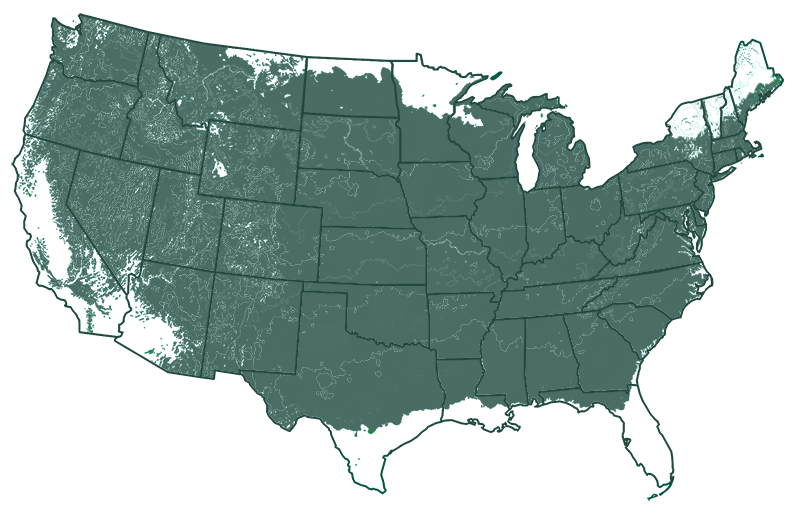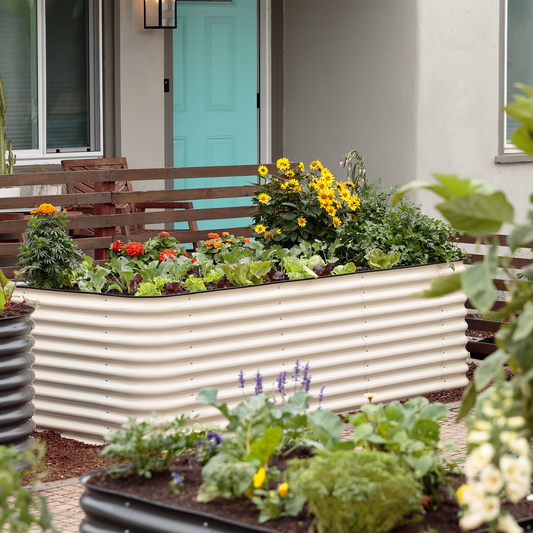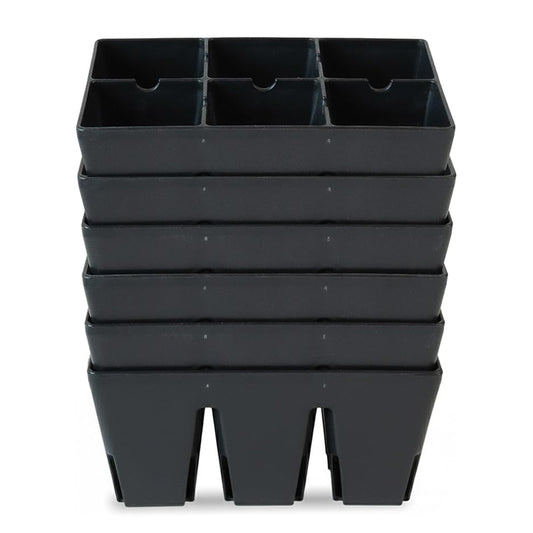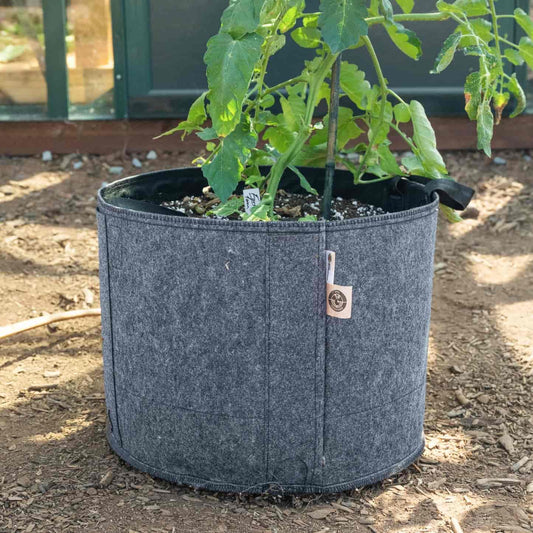

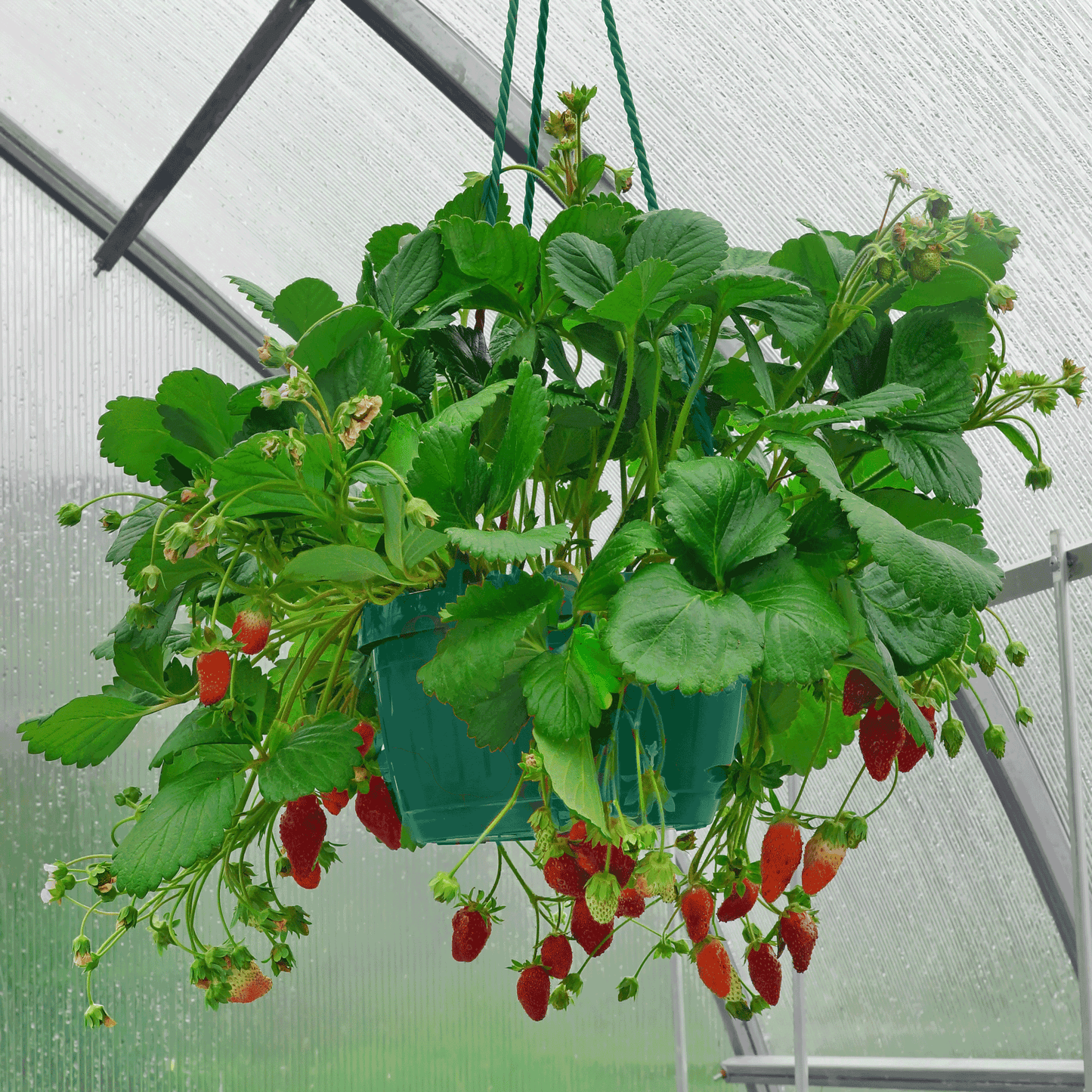
Everbearing Strawberry
View More Planting Info
Plant in a full sun position, or a partially shaded position in climates with harsh summers. To produce the most fruit, they need at least 6 hours of sun a day. The soil should be rich and loamy. Add plenty of well-matured compost to give the plants a good start. In the garden, choose beds that are easily accessible for picking fruit and maintaining plants. In containers, add extra compost to well-draining potting soil and ensure that all containers have good drainage holes. Water the plants in their containers an hour before planting. Once the soil is prepared, plant the strawberries so the soil just covers the roots with the crowns above the soil. Once the plants are in, water well and cover the area with mulch to conserve water and keep the weeds down. After four to five weeks, the plants will produce runners and set up daughter plants.
Harvesting:
Harvest in summer when the fruits are a deep red and smell fragrant.
Pruning:
Prune for neatness and to encourage new growth. Cut off brown leaves and remove rotting fruit.
Growth:
Everbearing Strawberry plants grow 8-24 inches high and 1-2 feet wide.
- Product Info
- Care and Maintenance
- Planting Care
- Growing Zone
Product Info
Mature Height: 8-10 in.
Mature Width: 12 in.
Sunlight: Full Sun
Growth Rate: Moderate
Does Not Ship To: AZ, OR
Care and Maintenance
Watering: Water a few times a week when there is no rain, keeping the soil evenly moist but not waterlogged. Water if the soil is dry to a depth of two inches. Water at the base of the plants and avoid watering the leaves, which can invite pests and diseases.
Fertilizing: If the soil was prepared well at planting time with plenty of compost, feeding the plants again during the season is unnecessary. If the plants look like they need a boost in midsummer, apply a balanced liquid fertilizer to avoid disturbing the shallow roots. Do not feed late in the season and do not overfeed, as this can lead to leafy growth without flowers or fruit.
Pruning: Prune lightly and regularly to maintain shape and encourage new growth. Remove any old, squishy fruit to keep the plants healthy. If you want each plant to produce well, remove the runners to focus all the energy on fruit production.
Pests and Diseases: Several pests and diseases may attack these plants. The best defense is to keep the plants healthy and avoid water stress or sudden temperature changes. Apply bird netting around the plants to protect your fruit from wildlife.
Pollination: The pretty white flowers attract pollinators like bees. Small, misshapen fruit is a sign that pollination wasn’t completely successful. In this case, plant other flowers near the strawberries to attract more pollinators.
Harvesting: Harvest the fruit when it's ripe and red in color. The plants will also have a fragrant strawberry smell. Harvest in the morning by gently twisting the berries off the stem. Eat them straight away or store them in the fridge for a few days.
Recovery Time: Transitioning from our nursery to your home can be a bit of a shock to your plant. A short acclimation period helps it recover and reduces stress.
Climate Adjustment: Every environment is unique. Giving your plant time to adjust to the local climate, humidity, and light conditions in a shady spot will set it up for better growth and health.
How to Acclimate Your Plant: Keep the plant in its container and place it in a shady, sheltered area away from high winds. Ensure it's watered adequately – the soil should be moist but not waterlogged. Monitor the plant for any signs of distress and allow it to adjust for a few days before planting. After a few days of acclimation, your plant will be better prepared to thrive in its new home for years to come.
Planting Care
Sunlight: Plant in full sun. In warmer regions, they will appreciate some afternoon shade.
Soil: Plant in well-draining soil with an acidic pH between 6 and 6.5. In containers, choose a high-quality potting mix enriched with compost.
Mature size: These plants will grow 8-24 inches high and 1-2 feet wide.
Climate: These strawberries grow best in temperate climates, from USDA Zones 4-9.
Thinning: Thin out old stems and brown leaves lightly throughout the season as they appear.
Location: Plant in a sunny position with some afternoon shade in hot areas.
Watering: Water two to three times weekly to keep the soil moist but not soggy. Plants in pots, especially those that don’t get rainfall, may need to be watered more often.
Pruning: Prune lightly to keep them neat and encourage new growth. Cut off any brown leaves and remove rotting fruit as it appears.
Spacing: Space plants at least 15 inches apart from each other and any other plants.
Harvesting: Harvest in summer when the fruits are a deep red and smell fragrant. Eat straight away or keep refrigerated for a few days. To store, freeze in single layers to use later or make jam.
Pollination: Everbearing strawberries are self-pollinating but will produce better fruit with many different types of insect pollinators.
Hardiness Zone: Everbearing strawberries are suitable for planting in USDA Zones 4-9.
Fertilizer: Feed in midsummer with liquid plant food to avoid disturbing the shallow root systems of these plants. If preferred, an application of slow-release granular fertilizer at the start of the summer can replace the liquid feed. Don’t overfertilize, as it will result in more leaves and fewer flowers and fruit.
Growing Zone
Growing Zone 4-8
